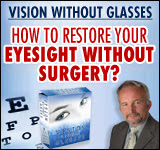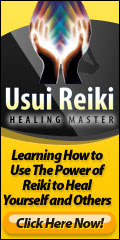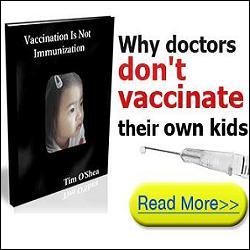Pulling Back the Curtain on the Organized Crime Ring That Is the Pharmaceutical Drug Cartel
Even though the video above is a few years old now and bigger fines of $3 billion have been assessed to GlaxoSmithKline two years ago, it is a good summary of how the drug cartels operate.
Did you know that nearly 20 percent of corporate crime is being committed by companies that make products for your health?
Sad but true, no less than 19 pharmaceutical companies made AllBusiness.com’s Top 100 Corporate Criminals List for the 1990s, and the trend has continued if not increased into the 21st Century. Crimes committed by some of the most well-known drug companies include:
- Fabricated studies
- Covering up serious problems with their drugs
- False claims
- Bribery, illegal kick-backs, and defrauding Medicare, Medicaid, and even the FDA
- Immoral threat and intimidation tactics (recall the international drug company Merck actually had a hit list of doctors to be “neutralized” or discredited for criticizing the lethally dangerous painkiller Vioxx. “We may need to seek them out and destroy them where they live,” a Merck employee wrote, according to an email excerpt read in court.)
Pulling Back the Curtain on Organized Crime
Fortunately, organizations like the Bureau of Investigative Journalism,1 the False Claims Act Legal Center,2 and Politicol News3 have all started investigating and publicizing the criminal actions these companies have been getting away with for decades.
Most recently, the British Medical Journal’s blog featured an article4 by former BMJ editor and director of the United Health Group’s chronic disease initiative, Richard Smith, aptly titled: “Is the Pharmaceutical Industry Like the Mafia?”
The piece is also the foreword to the book, Deadly Medicines and Organized Crime: How Big Pharma Has Corrupted Healthcare, written by Peter Gøtzsche, head of the Nordic Cochrane Centre, which is considered the gold standard in terms of independent research reviews.
In related news, a recently published study concluded that most drug commercials are misleading or outright false.5 There’s a literal mountain of evidence proving that pharmaceutical companies are untrustworthy at best, and criminal at worst. And yet they’re the backbone of our modern “healthcare” system…
Even Forbes Magazine6 recently published an article with the provocative headline: “Is Big Pharma Addicted To Fraud?” and asked out loud “whether any aspect of the pharmaceutical business can be trusted.”
Is It Fair to Compare the Pharmaceutical Industry with the Mafia?
If you depend on conventional medical care to address your health problems, then you’re basically entrusting your health to organizations that clearly have far more interest in their bottom line than your health. In his article, Is the Pharmaceutical Industry Like the Mafia? Smith writes:7
“The characteristics of organized crime, racketeering, is defined in US law as the act of engaging repeatedly in certain types of offence, including extortion, fraud, federal drug offenses, bribery, embezzlement, obstruction of justice, obstruction of law enforcement, tampering with witnesses, and political corruption.
 Peter [Gøtzsche] produces evidence, most of it detailed, to support his case that pharmaceutical companies are guilty of most of these offenses.
Peter [Gøtzsche] produces evidence, most of it detailed, to support his case that pharmaceutical companies are guilty of most of these offenses.
And he is not the first to compare the industry with the Mafia or mob. He quotes a former vice-president of Pfizer, who has said:
‘It is scary how many similarities there are between this industry and the mob. The mob makes obscene amounts of money, as does this industry. The side effects of organized crime are killings and deaths, and the side effects are the same in this industry. The mob bribes politicians and others, and so does the drug industry…’
Smith also notes that many more people are killed by the pharmaceutical industry than the mob. Prescription drugs also kill far more people than illegal drugs, and while most major causes of preventable deaths are declining, those from prescription drug use are on the incline.8, 9
For example, prescription drug fatalities more than doubled among teens and young adults between 2000 and 2008, and more than tripled among people aged 50 to 69.
Legal prescription drug abuse is a silent epidemic, and is part of the reason why the modern American medical system has become one of the leading causes of death and injury in the United States.
An estimated 450,000 preventable medication-related adverse events occur in the US every year. Merck’s painkiller Vioxx alone killed more than 60,000 people within a few years’ time before being withdrawn from the market.
“… [T]he benefits of drugs are exaggerated, often because of serious distortions of the evidence behind the drugs, a ‘crime’ that can be attributed confidently to the industry,” Smith writes.“The great doctor William Osler famously said that it would be good for humankind and bad for the fishes if all the drugs were thrown into the sea.
He was speaking before the therapeutic revolution in the middle of the 20th century that led to penicillin, other antibiotics, and many other effective drugs, but Peter comes close to agreeing with him and does speculate that we would be better off without most psychoactive drugs, where the benefits are small, the harms considerable, and the level of prescribing massive.”
‘Science-Based’ Medicine Has Fallen on Its Own Sword
 There are many areas within which corruption can take root, and the drug industry has nurtured corruption in most if not all of them. It would require an entire book to begin to address them all, which is exactly what Peter Gøtzsche has done in his book, Deadly Medicines and Organized Crime: How Big Pharma Has Corrupted Healthcare.
There are many areas within which corruption can take root, and the drug industry has nurtured corruption in most if not all of them. It would require an entire book to begin to address them all, which is exactly what Peter Gøtzsche has done in his book, Deadly Medicines and Organized Crime: How Big Pharma Has Corrupted Healthcare.
One of the most dangerous forms of corruption is that which occurs within medical science. For example, according to data from Thomson Reuters,10 the number of retractions of scientific studies have increased more than 15-fold since 2001, and a review11 published just last year showed that nearly 75 percent of all retracted drug studies were attributed to “scientific misconduct,” which includes:
- Data falsification or fabrication
- Questionable veracity
- Unethical author conduct
- Plagiarism
Corruption of science is incredibly serious, as health care professionals rely on published studies to make treatment recommendations, and large numbers of patients can be harmed when false findings are published. The average lag time between publication of the study and the issuing of a retraction is 39 months. And that’s if the misconduct is ever caught at all. What’s worse, about 32 percent of retractions are never published,12 leaving the readers completely in the dark about the inaccuracies in those studies!
Poster Children for Corrupted Science
One clear example of how deadly corrupted science can be is the painkiller Vioxx. There were many indications that this would be a dangerous drug, despite Merck’s claims, and I warned my readers to avoid it before its FDA approval in 1999. In 2008, four years after the drug was withdrawn from the market, an editorial13 published in the Journal of the American Medical Association (JAMA) suggested Merck might have deliberately manipulated dozens of academic documents published in the medical literature, in order to promote Vioxx under false pretenses.
The diabetes drug Avandia is another potent example. Between 1999 and 2007, Avandia is estimated to have caused over 80,000 unnecessary heart attacks,14 although the actual numbers of people harmed or killed by the drug is still largely unknown. Avandia is a poster child for the lethal paradigm of corrupted science as GlaxoSmithKline (GSK), the manufacturer of Avandia, hid damaging information about the drug for over 10 years, as they knew it would adversely affect sales!
Two years ago, GSK agreed to a $3 billion settlement over the sales and marketing practices of several of its drugs, including Avandia. This was the largest federal drug-company settlement in US history, surpassing the $2.3 billion paid by Pfizer in 2009 (see video above) for illegally promoting off-label uses of four of its drugs. Most recently, GSK’s crooked ways made international headlines yet again when Chinese authorities arrested four of the company’s senior executives on charges of cash and sexual bribery. Another 18 GSK employees and medical personnel were also reportedly detained.15 As reported byThe Guardian:16
“The Chinese authorities have accused GSK of acting like a criminal “godfather”, using a network of 700 middlemen and travel agencies to bribe doctors with £320m [$489 million] cash and sexual favors in return for prescribing GSK drugs. Gao said the police have evidence that bribery has been a ‘core part’ of GSK China’s business model since 2007.” [Emphasis mine]
As Smith writes in the featured article:
“The drug industry has systematically corrupted science to play up the benefits and play down the harms of their drugs… the industry has bought doctors, academics, journals, professional and patient organizations, university departments, journalists, regulators, and politicians. These are the methods of the mob.
The book doesn’t let doctors and academics avoid blame… doctors and academics are supposed to have a higher calling. Laws that are requiring companies to declare payments to doctors are showing that very high proportions of doctors are beholden to the drug industry and that many are being paid six figures sums for advising companies or giving talks on their behalf. It’s hard to escape the conclusion that these ‘key opinion leaders’ are being bought. They are the ‘hired guns’ of the industry.
And, as with the mob, woe be to anybody who whistleblows or gives evidence against the industry. Peter tells several stories of whistleblowers being hounded, and John Le Carré’s novel describing drug company ruthlessness became a bestseller and a successful Hollywood film.”
New Study Finds Most Drug Commercials Misleading
In related news, a recent study17 concluded that a majority of American drug commercials—60 percent of prescription drug ads, and 80 percent of ads for over-the-counter (OTC) drugs—are either misleading or outright false. Lead author Adrienne E. Faerber told Scientific American:18
“There were cases of blatant lying, but these half-truths form more than half of our analysis.”
 In all, the researchers analyzed 84 prescription and 84 OTC drug ads aired on major networks between 2008 and 2010. Ads deemed to be “potentially misleading” omitted important information, exaggerated information, made lifestyle associations, or expressed opinions. Ads making false claims were either factually false or unsubstantiated. Ads promoting erectile dysfunction drugs were among the worst offenders. OTC drugs, which are overseen by the Federal Trade Commission and not the FDA, were also more likely to be misleading or false. Overall, a mere 33 percent of drug ads were found to be “objectively true.”
In all, the researchers analyzed 84 prescription and 84 OTC drug ads aired on major networks between 2008 and 2010. Ads deemed to be “potentially misleading” omitted important information, exaggerated information, made lifestyle associations, or expressed opinions. Ads making false claims were either factually false or unsubstantiated. Ads promoting erectile dysfunction drugs were among the worst offenders. OTC drugs, which are overseen by the Federal Trade Commission and not the FDA, were also more likely to be misleading or false. Overall, a mere 33 percent of drug ads were found to be “objectively true.”
Interestingly enough, other research published in the journal Psychological Science19, 20 found that warnings of adverse side effects in drug ads can actually backfire over time. While initially making viewers cautious, over the course of time people tend to ignore the warnings. People even began to see the warning as “an indication of the firm’s honesty and trustworthiness!” According to the authors:
“In four studies, we demonstrated this phenomenon. For example, participants could buy cigarettes or artificial sweeteners after viewing an ad promoting the product. Immediately afterward, the quantity that participants bought predictably decreased if the ad they saw included a warning about adverse side effects. With temporal distance (product to be delivered 3 months later, or 2 weeks after the ad was viewed), however, participants who had seen an ad noting the benefits of the product but warning of risky side effects bought more than those who had seen an ad noting only benefits.”
But Who Is Behind the Drug Companies?
While it is true that there were fines of $2 billion and $3 billion against the drug companies, that really pales in comparison to the fines being leveraged against the financial industry. JP Morgan will likely receive an $11 billion dollar fine.21 This level of fine doesn’t even begin to come close to what these criminal institutions really deserve for how they have ruined the US economy.
But keeping the article focused on health, you have to wonder if there is some common thread here and I believe there is. The drug companies are typically owned by other corporations. Just as the featured video shows, the shell game that Pfizer played shielded them by developing tiered lower-level corporations. What is rarely ever explained is that the corporate shield also runs in the other direction. The primary owners of most of these drug companies are the international banksters that are responsible for most of the problems we see not only in the health arena, but in all areas of the world.
How To Avoid Becoming a Disease Statistic
 Ultimately, the take-home message here is that even if a drug or treatment is “backed by science,” this in no way guarantees it is safe or effective. Likewise, if an alternative treatment has not been published in a medical journal, it does not mean it is unsafe or ineffective. Also, when a drug or treatment does come with warnings, do yourself a favor and don’t tuck that information into some recessed corner in the back of your mind!
Ultimately, the take-home message here is that even if a drug or treatment is “backed by science,” this in no way guarantees it is safe or effective. Likewise, if an alternative treatment has not been published in a medical journal, it does not mean it is unsafe or ineffective. Also, when a drug or treatment does come with warnings, do yourself a favor and don’t tuck that information into some recessed corner in the back of your mind!
You’ve got to use all the resources available to you, including your own sense of common sense and reason, true experts’ advice and other’s experiences, to determine what medical treatment or advice will be best for you in any given situation. I advise you to remain skeptical but open — even if it is something I’m saying, you need to realize that YOU are responsible for your and your family’s health, not me, and certainly not drug companies trying to sell their wares and convince you to take dangerous “symptom-cover-ups” disguised as science-based solutions.
When it comes to health, an ounce of prevention is certainly better than a pound of cure, especially when the cure comes in a pill. Please keep in mind that leading a common-sense, healthy lifestyle is your best bet to achieve and maintain a healthy body and mind. And while conventional medical science may flip-flop back and forth in its recommendations, there are certain basic tenets of optimal health (and healthy weight) that do not change, including the following:
- Proper Food Choices: For a comprehensive guide on which foods to eat and which to avoid, see my nutrition plan. Generally speaking, you should be looking to focus your diet on whole, ideally organic, unprocessed foods. For the best nutrition and health benefits, you will want to eat a good portion of your food raw.
Avoid sugar, and fructose in particular. All forms of sugar have toxic effects when consumed in excess, and drive multiple disease processes in your body, not the least of which is insulin resistance, a major cause of chronic disease and accelerated aging. I believe the two primary keys for successful weight management are severely restricting carbohydrates (sugars, fructose, and grains) in your diet, and increasing healthy fat consumption. This will optimize insulin and leptin levels, which is key for maintaining a healthy weight and optimal health.
 ~~ Help Waking Times to raise the vibration by sharing this article with the buttons below…
~~ Help Waking Times to raise the vibration by sharing this article with the buttons below…